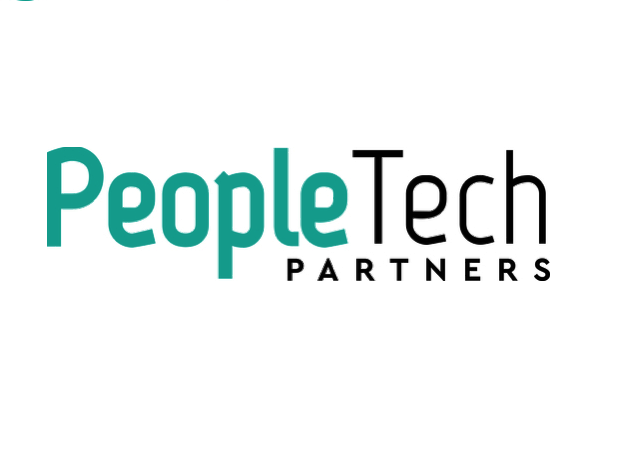by Jessica Yuen
Daycare pickups and drop-offs, emergency sick days, parent-teacher conferences, daily bonding time, extended bedtime and morning routines, heaps of new responsibilities and leadership roles…Adding kids to the mix when working in a fast-paced company makes integrating family and work an ongoing struggle.
More and more workplaces are building inclusive environments to support employees with families and let them know they are valued. After all, parents are some of the most productive, focused employees in any workforce as they are constantly honing their multi-tasking, prioritization, and staying-calm-under-pressure skills. Nurturing the parents in your workplace can transform an isolating experience into a supportive, connected community. For companies, the payoff for supporting parents can mean more productive and happier employees, better recruiting, higher morale, and longer retention. Family support programs and cultures also signal to potential candidates that a company values and supports all their employees and enables individuals to integrate their work and home lives.
Here are a few ideas on how to take your workplace to the next level and make sure parents feel recognized and valued so they can bring their best to work and home:
Intentionally build community: Higher quality contributions and innovations are linked to inclusion and connection. Make this intentional rather than serendipitous in the workplace by budgeting time and resources for dedicated events to bring parents together such as a regular lunch or afternoon coffee. Technologies like Slack foster additional community building asynchronously. Creating a main parents channel/chatroom can be a place for celebrating, commiserating, and sharing of general advice with coworkers. Sub-channels are great for more focused discussion — for example, those using the mother’s room, a giveaways group (to share clothes or toys), how to navigate FMLA/Leave, etc.
A simple way to connect new employees who have kids or expecting parents is by having them introduce themselves to the parent community with pictures of their adorable little ones or a short announcement about their due date and biggest questions. Having parents with older children mentor employees with younger ones to provide perspective can be another great way to foster inclusion and support employees with families.
Commit to a flexible work schedule: We’ve all had an early morning meeting or overnight company event pop up, but when you’re a parent, it can be costly and logistically complex to accommodate last minute childcare. If your organization can support these guidelines, all employees (not just your parents) will thank you.
- Keep to work hours: One of the best ways to support employees having home life is by holding work activities during regular work hours. Schedules are one of the most important indicators of walking the walk to support parents. One startup team moved their biweekly all-hands from 6pm to 3pm so employees could pick up their kids. Even better, they also provided meeting notes so folks could catch up on the latest and greatest at their convenience. If you have the ability to influence these changes at your company, proactively implement them rather than wait for your employees to ask.
Encourage a mindset of “get it done”, not “butts in seats”. Recognize employees by giving kudos for their impact and results (rather than how many all nighters they’ve pulled) reinforces this mindset. If your team is split across different time zones, try alternating meeting schedules so one region isn’t always expected to work outside regular work hours, or if it’s logistics gymnastics to make that work, try an asynchronous approach — gather input from team members ahead of time and then record the meeting.
- Give advance notice: If work meetings or activities must be held outside of work hours, let participants know well ahead of time if it is a priority to attend. Also, if travel is required, schedule it so travel can be done during the work week. If your budget can afford it, offer to help with childcare costs during the event. One example highlighting the importance of considering the needs of employees with families is of a company that organized an event on Parent Inclusion scheduled for 5–7pm. When employees asked if they could move the timing earlier in the day to accommodate pickup and dinner schedules, they told parents to hire a babysitter / childcare in order to attend. The irony was lost on the coordinators.
Smooth the transition to parenthood
- Encourage parents to take their full leave and help them do it. If you have a parental leave policy, support use of it! And if you don’t have a policy, create one. Parental leave in the US is far behind the rest of the world as 1 of 8 countries (and the only high-income country, per the World Bank) that does not have paid maternity leave nor paid paternity leave. And even when it is offered, there is pressure not to use it. Rather, encourage expecting parents to maximize their leaves, and ask leaders to role model maximizing it like Katrina Lake, CEO at Stitch Fix, Blake Mykoskie, CEO of TOMS, or Jacinda Ardern, Prime Minister of New Zealand. Then provide resources to help employees plan for their leave.
- Support the coworkers: Backfill for those on leave. This not only creates a smoother transition, but also does two things 1) Ensures the person on leave isn’t forgotten (one parent shared “I went on leave, there was a re-org, and they forgot about me so I was re-orged out”), and to minimize resentment from coworkers for going on leave and taking on the extra workload (“4 parents on my team were on leave all at once and I was expected to cover for all of them…”).
- Make leave benefits practical: First off, make benefits easy to figure out. You shouldn’t need to be a detective to figure out how to use the benefits. Next, If you are like the company Gusto, you might develop your own Bundle of Joy package that includes practical support for the transition in addition to time off. Their package includes subsidies for meal delivery, house cleaners, and a doula/sleep trainer for use in the first year. If you’ve got an important meeting in the morning and your kid isn’t sleeping through the night, having someone to take care of them while you just get 8 hours is a godsend.
- Give re-entry the same attention as new hire onboarding. Fast-paced environments can change quickly, so support those coming back by getting them up to speed on what they missed, and help them initially prioritize / think about their role and responsibilities. Being proactive, thoughtful, and systematic in how people return from leave is ideal — the last thing a returning employee wants to hear is, “Welcome back. I haven’t really thought about what’s different…ask me a question and I’ll let you if it has changed.” Set up an internal parent buddy system to help acclimate and provide helpful resources or if you have budget to support it, engage one of the companies now offering support (like Cleo!).
- Recognize contributions: If a leave overlaps with an annual performance review, hold one just before or after the leave, to ensure continuation of professional development goals. Also, ensuring that employees come back to at least the same or a more amplified role really sets the tone that the organization supports parents.
- Respect their time, especially for pumping moms: Some companies offer alternative work structures like part-time, flex-schedules, or job shares for the first few months or longer. Managers should help protect non-working time for new parents. Other organizations offer transition time like 50% capacity for 100% pay for a month — Pinterest takes this up a notch with a month of transition time where you go in one day a week for full pay. Also, work in regular breaks to accommodate pumping moms and don’t let meetings run into the breaks. While just being punctual is most effective, give permission to those folks to get up and leave as needed.
Support the ups and downs once employees have kids:
- Offer backup care or extra time off: Providing an allowance or subsidy to cover child care is hugely helpful. Some companies offer extra sick time to cover when employees’ kids get sick, or access to services like Care.com or Helpr. Blackrock gives 21 days of backup care (in conjunction with Bright Horizons and Care.com) while Patagonia provides onsite childcare as well as childcare support for work trips.
- Invite kids to the office: Celebrating Bring Your Child to Work Day is a great way to share your work life with your family. Some companies take it to the next level by encouraging kids at work on a regular basis with Friends and Family events, or even a daily basis with initiatives like Babies at Work which provides resources for companies to transition to babies in the office as a norm. No company plan for this in sight? Check out simple ways to support this even if your company doesn’t have a policy
- Make the physical office kid friendly. Whether it’s bathrooms with changing tables, high chairs in the cafeteria, a practical and awesome mother’s room, or having swag for kids readily available, a couple thoughtful additions can go a long way.
Excited about trying some of these out but not sure where to start? Ask the parents at your company what they’d get most excited about, and pick 1–2 to try out. The best way to serve your employees is by listening to what they need.
Seen awesome things at companies not mentioned here? Post them in the comments!
Jessica Yuen is the Chief People Officer at Couchbase. Previously, she was Head of People at Gusto.
–
Hear more from Jessica Yuen and other top People leaders at an upcoming event series in the Bay Area! Join PeopleTech Partners community of leaders for an evening of networking and thought leadership focused on Next Generation Support for New Parents and Parental Inclusion in the Workforce in August. PTP will co-host two evenings: one at Reddit Headquarters in San Francisco on August 14th and one at Netflix Headquarters in Los Gatos on August 15th! Register today and join the conversation!
–
Originally published at medium.com


